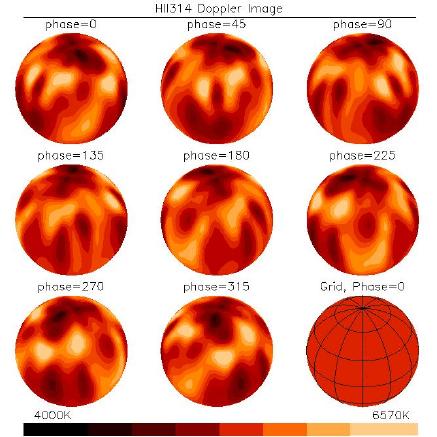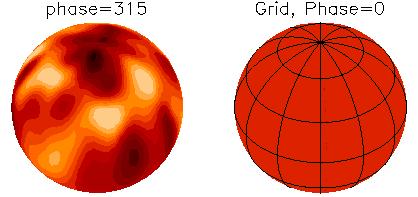

The upper figure shows a Doppler image of the Pleiades G-dwarf HII 314 (left). The surface grid is shown in the right image.
The lower figure shows a Doppler image of HII 314 from a 20-A piece of spectrum including the Li I 6707A and the Ca I 6717A lines. Maps are plotted in a spherical projection at eight equidistant rotational phases. The temperature scale is indicated and is the same for all projections.
( credit: K.G. Strassmeier, AIP )
We present the first Doppler image of a solar-type G dwarf in the
Pleiades open cluster obtaine from high-resolution Gecko CFHT spectra.
The star represents the Sun at an age
of approximately 100~Myr and could be an important target for further
progress in magnetic-braking and angular-momentum-transport theories.
Our image reconstructions were done from a full spectrum inversion with a total of 38 spectral lines simultaneously but we also present single-line inversions using the prominent Li I 6707-A line and the nearby Ca I 6717-A line. The maps reveal cool spots at or near the pole and within the equatorial regions, in contradiction to our predictions from flux-tube modelling that only medium-latitude spots should be seen. The maps also show several warm spots near the equatorial regions but their reality needs to be confirmed. A polar spot is recovered but likely consists of several smaller spots at very high latitudes touching the visible pole instead of a big cap-like spot as seen on some RS~CVn binaries.
For detailed information see our Doppler imaging webpage